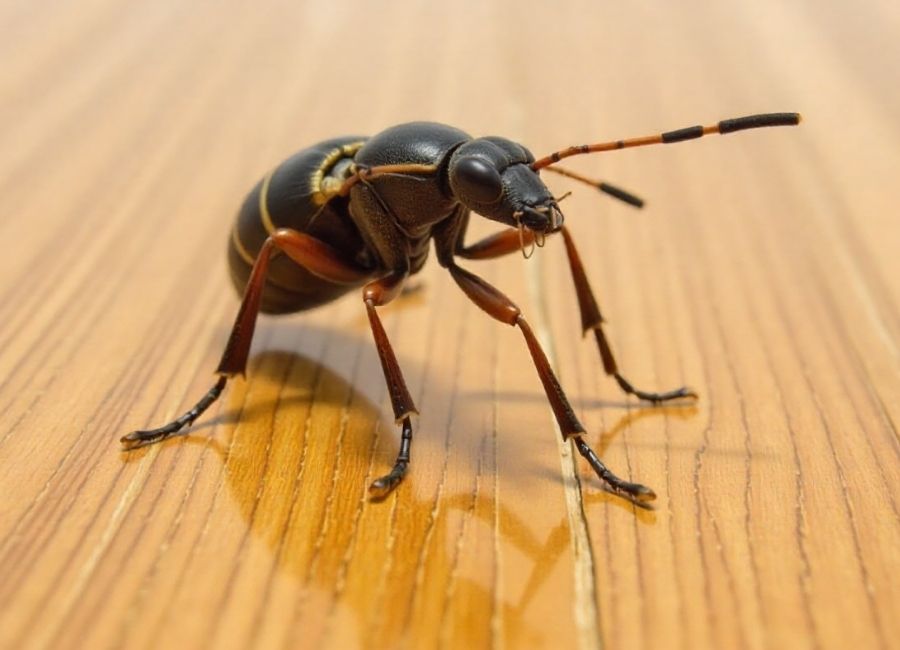Your beautiful hardwood floors represent a significant investment in your home’s value and aesthetic appeal. Unfortunately, several wood-boring insects view those same floors as an all-you-can-eat buffet. These tiny invaders can cause thousands of dollars in damage before homeowners even realise there’s a problem. (The true cost of termite damage: What homeowners need to know., n.d.)
Understanding which insects pose the greatest threat to your wooden floors—and recognising the early warning signs—can save you from costly repairs down the road. From powder post beetles that leave behind telltale dust piles to termites that work silently beneath the surface, each pest requires a different approach to detection and treatment.
This comprehensive guide will help you identify the most common wooden floor pests, spot the signs of an infestation, and take decisive action to protect your investment. Whether you’re dealing with an active problem or want to prevent future issues, you’ll find practical solutions that work.
The Most Common Wooden Floor Insects
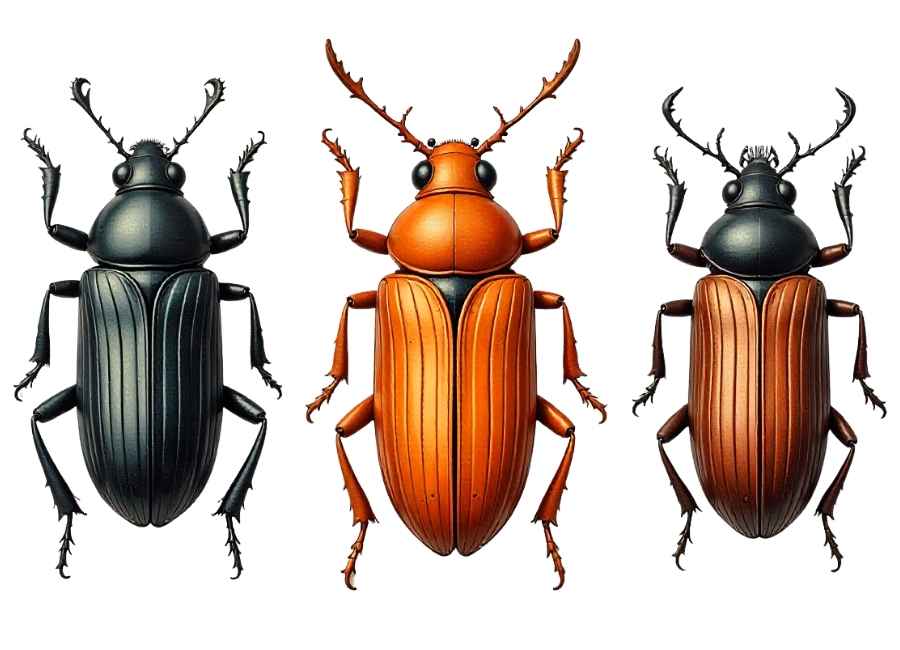
Powder Post Beetles
Powder post beetles are among the most destructive insects that target finished hardwood floors. (Mitchell & Phil, 2022) These small brown beetles, measuring just 1/8 to 1/4 inch long, get their name from the fine, powdery dust they leave behind as they tunnel through wood.
Adult beetles emerge from wood through perfectly round exit holes, typically 1/16 to 1/8 inch in diameter. The real damage occurs during their larval stage, when they spend months or even years boring tunnels through the wood’s interior. This creates a honeycomb-like structure that severely weakens the floor’s integrity.
Powder post beetles prefer hardwoods with high starch content, making oak, ash, and hickory floors particularly vulnerable. (Powderpost Beetle Control, n.d.) They’re most active in areas with moderate to high humidity levels, typically between 13-20% moisture content in the wood. (On the lookout for wood-boring insects, n.d.)
Subterranean Termites
While termites are better known for attacking structural timber, they don’t discriminate when it comes to wooden flooring. Subterranean termites build mud tubes to travel from their underground colonies to food sources, including your hardwood floors.
These insects work methodically, hollowing out wood from the inside while leaving the surface largely intact. This makes early detection extremely challenging—by the time visible damage appears, the infestation has likely been active for months or years.
Subterranean termites require direct contact with soil or a moisture source to survive. (Effects of soil moisture on tunnelling, survivorship, and food consumption of the Formosan and eastern subterranean termites (Blattodea: Rhinotermitidae), 2023) They typically enter homes through foundation cracks, concrete joints, or areas where wood directly contacts soil.
Old House Borers
Old house borers are large, dark-colored beetles that primarily attack softwood construction lumber, but they can also damage pine and fir flooring. Despite their name, these insects don’t exclusively target old homes—they’re equally happy to infest new construction.
The larvae of old house borers can remain active in wood for 3-5 years, growing up to 1.5 inches long as they tunnel through the material. (Old House Borer, n.d.) Adult beetles are substantial insects, measuring 5/8 to 1 inch in length, with distinctive long antennae.
These beetles produce an audible rasping or ticking sound as they bore through wood, which homeowners sometimes notice during quiet evening hours.
Carpet Beetles
While carpet beetles don’t directly damage wooden floors, they can cause problems in homes with area rugs over hardwood. The larvae feed on natural fibres and organic debris that accumulates in floor cracks and crevices.
Adult carpet beetles are small, oval-shaped insects with mottled patterns in brown, black, and white. They’re often found near windows, as they’re attracted to light and frequently enter homes through open doors and windows.
Recognising Signs of Infestation
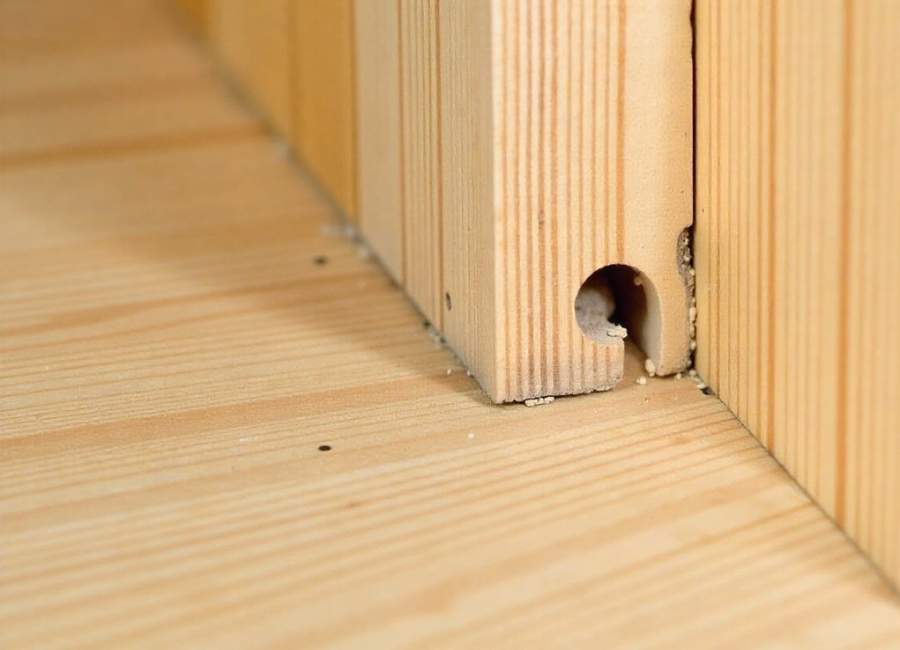
Physical Damage Indicators
The most obvious sign of wood-boring insect activity is the presence of small, round exit holes in your flooring. Fresh holes often have clean, sharp edges, while older holes may appear weathered or have accumulated dust and debris.
Examine your floors closely for fine powder or sawdust accumulating near baseboards or in floor joints. This frass (insect waste and wood particles) varies in colour and texture depending on the type of insect and wood species involved.
Weakened or sagging floor sections may indicate extensive internal damage. If your floors feel spongy underfoot or show visible signs of structural compromise, immediate professional inspection is warranted.
Sound and Movement Clues
Many wood-boring insects produce audible sounds as they feed and tunnel. Listen for subtle ticking, rasping, or scratching noises, particularly during quiet evening hours when ambient noise levels are low.
Some homeowners report hearing sounds similar to fingernails tapping on wood or gentle scratching coming from within the floors themselves.
Environmental Factors
Wood-boring insects thrive in specific environmental conditions. High humidity levels, poor ventilation, and moisture problems create ideal breeding grounds for most species. (Parrett & Mike, 2020)
Check for water stains, musty odours, or visible mould growth near affected flooring areas. These conditions not only attract insects but also weaken wood fibres, making them easier to penetrate and digest.
Prevention Strategies That Work
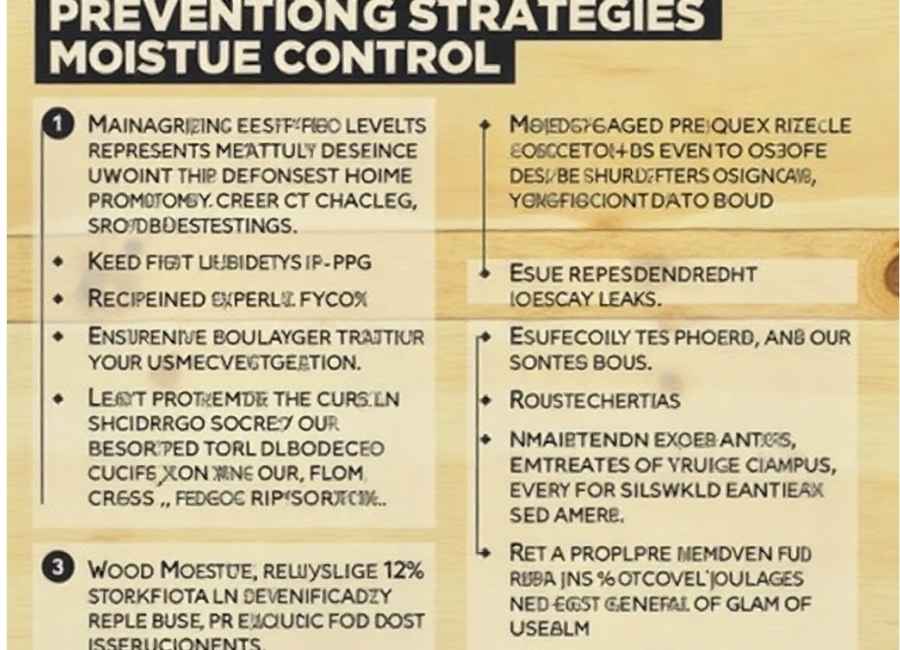
Moisture Control
Maintaining proper humidity levels represents your first line of defence against wood-boring insects. Keep indoor humidity between 30-50% using dehumidifiers, proper ventilation, and air conditioning systems.
Address water leaks promptly, ensure proper drainage around your home’s foundation, and improve ventilation in crawl spaces and basements. Wood moisture content below 12% significantly reduces the risk of most infestations. (Parrett & Mike, 2020)
Regular Inspections
Conduct thorough visual inspections of your wooden floors every few months, paying particular attention to areas near exterior walls, bathrooms, and kitchens where moisture levels tend to be higher.
Use a flashlight to examine floor joints, baseboards, and transitions between different flooring materials. Look for the warning signs mentioned earlier: exit holes, frass accumulation, and any changes in floor appearance or integrity.
Professional Treatments
Consider preventive treatments from licensed pest control professionals, especially if you live in areas with known insect activity or have experienced previous infestations.
Modern wood preservatives and borate treatments can provide long-term protection without compromising indoor air quality or requiring evacuation during application.
Treatment Options for Active Infestations
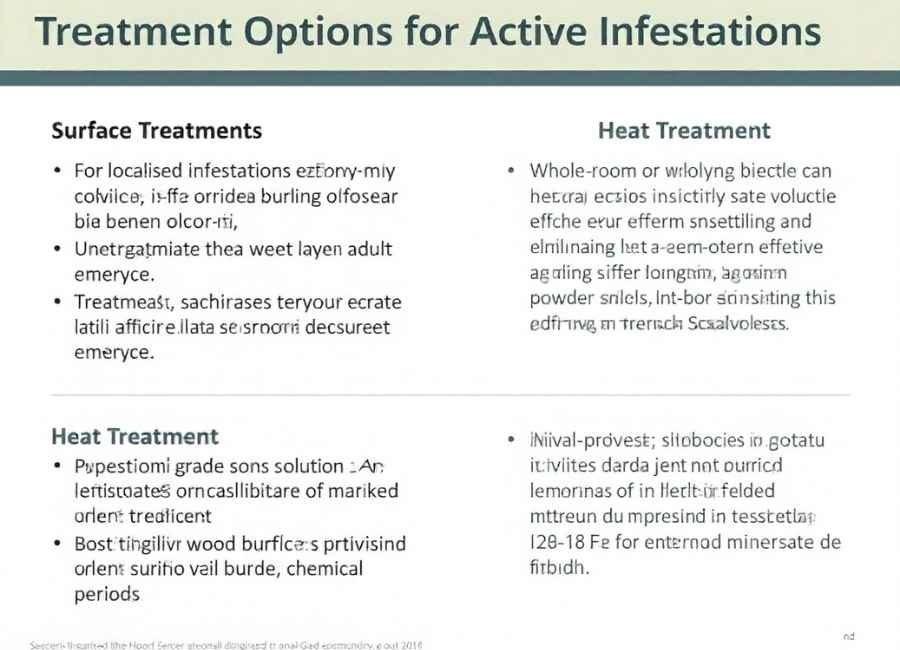
Surface Treatments
For localised infestations affecting only the surface layers of flooring, topical insecticides can provide effective control. These treatments penetrate the wood surface to eliminate larvae and prevent adult emergence.
Professional-grade borate solutions offer both immediate insecticidal action and long-term wood preservation benefits. These treatments are particularly effective against powder post beetles and other surface-feeding species. (Board Defence – I Wood Care, n.d.)
Heat Treatment
Whole-room or whole-house heat treatment can eliminate all life stages of wood-boring insects without chemical applications. This method raises the temperature of infested materials to lethal levels (typically 120-140°F) for sustained periods. (Heat Treatment Kills Most, but Not All, Wood Borers in Wood Packaging Material, 2022)
Heat treatment is especially effective for severe infestations or in situations where chemical treatments aren’t appropriate due to health concerns or environmental sensitivities.
Replacement Considerations
Severely damaged flooring sections may require complete replacement rather than treatment. This approach becomes necessary when structural integrity has been compromised or when the extent of damage makes repair impractical.
When replacing infested flooring, it’s crucial to treat surrounding areas to prevent reinfestation and identify the underlying conditions that led to the original problem.
When to Call Professional Help
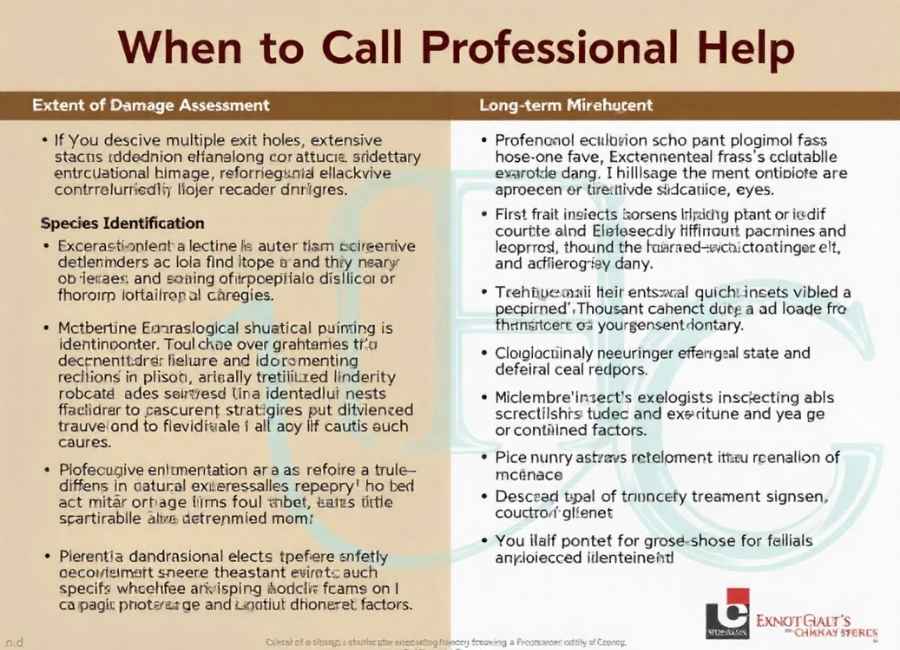
Extent of Damage Assessment
If you discover multiple exit holes, extensive frass accumulation, or structural damage to your flooring, professional evaluation is essential. Experienced technicians can determine the full scope of the problem and recommend appropriate treatment strategies.
Professional inspections often reveal hidden damage that isn’t visible to untrained eyes, potentially saving thousands of dollars in additional repairs if caught early. (Finding Termite Damage During a Home Inspection, 2021)
Species Identification
Accurate insect identification is crucial for selecting effective treatment methods. Different species respond to different control strategies, and misidentification can lead to treatment failures and continued damage.
Professional entomologists or pest control specialists have the training and equipment necessary to properly identify insects based on physical specimens, damage patterns, and environmental factors. (Pest ID, n.d.)
Long-term Management Plans
Comprehensive pest management extends beyond treating current infestations to include ongoing monitoring and prevention strategies. Professionals can develop customised maintenance programs based on your home’s specific risk factors and construction characteristics.
Protecting Your Investment
Wood-boring insects pose a serious threat to hardwood floors, but early detection and appropriate action can minimise damage and preserve your investment. Regular inspections, proper moisture control, and prompt professional intervention when problems arise form the foundation of effective floor protection.
Remember that prevention is always more cost-effective than treatment. By maintaining optimal environmental conditions and staying vigilant for early warning signs, you can enjoy your beautiful wooden floors for decades to come without the stress and expense of major pest-related repairs.
If you suspect insect activity in your wooden floors, don’t wait for the problem to worsen. Contact a licensed pest control professional for a thorough inspection and customised treatment plan that addresses your specific situation.







